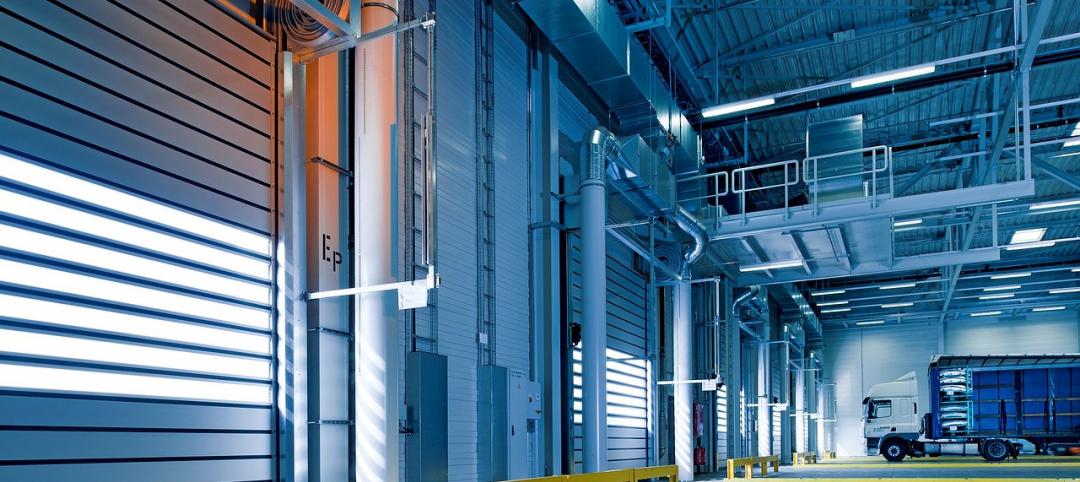The need to decrease energy usage and subsequent emissions from the building sector has been at the forefront of U.S. green movement. Not only has energy reduction been viewed as a step for improving the environment, it has financial benefits for companies and homeowners.
To address this, researchers at the Massachusetts Institute of Technology’s (MIT) Concrete Sustainability Hub conducted a life-cycle assessment (LCA) study to evaluate and improve the environmental impact and study how the “dual use” aspect of concrete – its ability to offer a durable structure while providing thermal mass benefits for energy loads – affects the environmental footprint of the structure.
"Methods, Impacts, and Opportunities in the Concrete Building Life Cycle" provides a comprehensive analysis that advances three key areas relevant to the buildings LCA field: methodology, benchmarking, and impact-reduction opportunities. The study is a major development for construction-related life-cycle assessment because it thoroughly examines all phases of the complete life cycle of a building – from acquisition of materials to construction, the use of the building, and finally demolition and end of life.
“Most environmental assessments do not move beyond the construction phase and only provide a partial picture of the full impact a particular material can have on a building. This is short-sighted,” David Shepherd, director of sustainable development for the Portland Cement Association (PCA) said. “The heating, cooling, and general operations of buildings and homes in the United States accounts for approximately 70 percent of national energy consumption each year and an accurate LCA needs to include the operational phase.”
Concrete, essential for the construction of buildings and homes, has largely been chosen as a building material for its structural properties rather than its energy-saving properties. Although sustainable builders have known the thermal mass attributes of concrete significantly reduce heating and cooling needs, the energy consumption required to produce its key ingredient, cement, has raised questions about its environmental viability.
In its environmental assessment, MIT researchers found concrete homes produce lower greenhouse gas emissions than current best practice code – compliant wood-frame residences throughout a 60-year service life.
Concrete homes did have a higher embodied global warming potential (GWP) associated with the pre-use phase of LCA when raw materials are harvested and turned into construction materials, transported to the site, and assembled into the finished home. However, this phase accounts for only about 2 to 12%of the overall global warming potential for the life of the home. For the 60-year period of the study, houses constructed with insulated concrete forms have 5 to 8 percent lower GWP than current code compliant light frame wood houses, based on greater thermal mass and higher R-values. Researchers found similar results when evaluating multifamily residences.
Commercial office buildings built with a concrete structural frame produce slightly less greenhouse gas emissions over a 60-year service life than commercial structures built with steel frames, based on the results of the comprehensive MIT assessment.
MIT researchers then evaluated strategies to lower a concrete building’s carbon footprint and overall environmental impact. A major advancement was the incorporation of a cost-impact analysis to determine whether or not a given environmental reduction strategy made economic sense. Among the strategies evaluated, the two that reduced embodied emissions – increased fly ash and reducing the thickness of concrete walls from a 6-inch to a 4-inch concrete core – were found to be both economical and effective ways to reduce emissions. BD+C
Related Stories
Giants 400 | Dec 16, 2020
Download a PDF of all 2020 Giants 400 Rankings
This 70-page PDF features AEC firm rankings across 51 building sectors, disciplines, and specialty services.
Architects | Dec 14, 2020
2021 AIA Gold Medal awarded to Edward Mazria
The Gold Medal honors an individual whose significant body of work has had a lasting influence on the theory and practice of architecture.
Healthcare Facilities | Dec 10, 2020
The Weekly show: The future of medical office buildings, and virtual internship programs
This week on The Weekly show, BD+C editors spoke with leaders from SMRT Architects and Engineers and Stantec about the future of medical office buildings, and virtual internship programs
Multifamily Housing | Dec 4, 2020
The Weekly show: Designing multifamily housing for COVID-19, and trends in historic preservation and adaptive reuse
This week on The Weekly show, BD+C editors spoke with leaders from Page & Turnbull and Grimm + Parker Architects about designing multifamily housing for COVID-19, and trends in historic preservation and adaptive reuse
Giants 400 | Dec 3, 2020
2020 Science & Technology Facilities Giants: Top architecture, engineering, and construction firms in the S+T sector
HDR, Jacobs, and Turner head BD+C's rankings of the nation's largest science and technology (S+T) facilities sector architecture, engineering, and construction firms, as reported in the 2020 Giants 400 Report.
Giants 400 | Dec 3, 2020
2020 Laboratory Facilities Sector Giants: Top architecture, engineering, and construction firms in the U.S. laboratory facilities sector
Affiliated Engineers, HDR, and Skanska top BD+C's rankings of the nation's largest laboratory facilities sector architecture, engineering, and construction firms, as reported in the 2020 Giants 400 Report.
Giants 400 | Dec 3, 2020
2020 Industrial Sector Giants: Top architecture, engineering, and construction firms in the U.S. industrial buildings sector
Clayco, Jacobs, and Ware Malcomb top BD+C's rankings of the nation's largest industrial buildings sector architecture, engineering, and construction firms, as reported in the 2020 Giants 400 Report.
Giants 400 | Dec 3, 2020
2020 Convention Center Sector Giants: Top architecture, engineering, and construction firms in the U.S. convention center sector
AECOM, Gensler, and Jacobs head BD+C's rankings of the nation's largest convention center sector architecture, engineering, and construction firms, as reported in the 2020 Giants 400 Report.
Giants 400 | Dec 3, 2020
2020 Reconstruction Sector Giants: Top architecture, engineering, and construction firms in the U.S. building reconstruction and renovation sector
Gensler, Jacobs, and STO Building Group head BD+C's rankings of the nation's largest reconstruction sector architecture, engineering, and construction firms, as reported in the 2020 Giants 400 Report.
Giants 400 | Dec 3, 2020
2020 K-12 School Sector Giants: Top architecture, engineering, and construction firms in the U.S. K-12 school facilities sector
AECOM, Gilbane, and PBK head BD+C's rankings of the nation's largest K-12 school facilities sector architecture, engineering, and construction firms, as reported in the 2020 Giants 400 Report.

















